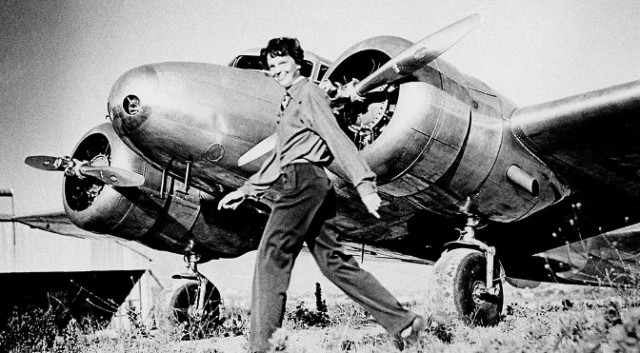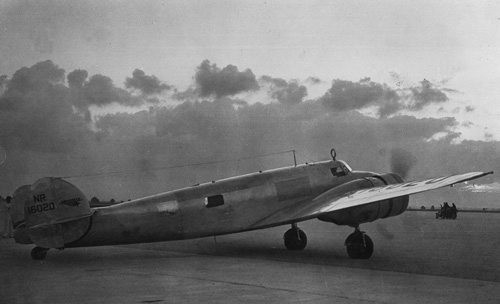On July 2, 1937, American aviation pioneer Amelia Earhart was attempting to circumnavigate the globe in a modified twin-engine Lockheed Electra 10E when she — and her navigator, Fred Noonan — mysteriously disappeared in the middle of the Pacific Ocean near Howland Island. Of course, we like to think that such an incident would never happen in 2014, with reliable long-range radio communications and world-spanning satellite coverage, but we only need look at the tragedy of Malaysia Airlines flight MH370 to know that losing — and tracking down — planes is still a topic worth discussing.
Now, at long last, it seems that dogged investigation and advanced technology may have finally solved the mystery of what happened to Amelia Earhart.
TIGHAR
In the past 24 hours, the media has picked up on the latest findings from TIGHAR, The International Group for Historic Aircraft Recovery. TIGHAR announced earlier this month that a scrap of metal it turned up in one of its artifact-finding missions to Gardner Island (now known as Nikumaroro) as belonging to Amelia Earhart’s Lockheed Electra. What most people may not realize, however, is that this scrap of metal isn’t a freak chance — it’s the result of nearly 30 years of work. Since 1989, TIGHAR has been compiling data, evaluating evidence, and assembling information on where Earhart’s Lockheed Electra 10E might have gone down — and where the wreck is now. As someone who has followed the search for Earhart’s plane for a number of years, I wanted to take an opportunity to talk about the technology and analysis behind that effort rather than focusing on a single scrap of metal.
The patch is visible in this image, behind the starboard window
There are two things you need to know before diving into this story:
1) I have chosen some of the highlights and most interesting details, not to cherry pick the evidence for the Nikumaroro landing theory, but because TIGHAR has produced several hundred PDFs of evidence, analysis, historical documents, and records. I highly recommend that anyone who finds this topic interesting dive into that body of research. A shorter version for those without several hours to spare is also available.
2) All of the evidence we’re going to discuss is circumstantial. The strength of the argument is that there is an absolutely mind-boggling amount of circumstantial evidence. Multiple reports from settlers and navy personnel of recent habitation, including one such report from the navy pilot who overflew Gardner Island in the week following Earhart’s crash. A body recovered from the island (along with American shoes) in the 1930s, before being lost in World War 2. Photographs of what appears to be airplane wreckage. Villagers and one-time settlers who report seeing and even using bits of metal and material that would match said airplane wreckage. The discovery of a water catchment system in 1944 that could’ve been built using materials carried aboard Earhart’s Electra.
After a review of the evidence TIGHAR has found to date, I personally find the Nikumaroro hypothesis extremely credible, but readers should be aware that whether the Lockheed Electra 10E possessed sufficient fuel to reach the island is a matter of debate and depends, to some extent, on how you read the radio transmissions the Itasca picked up. These issues are extensively discussed in the links above.
What we know
On July 2, 1937 Amelia Earhart and navigator Fred Noonan took off from Lae, New Guinea. They were flying a specially outfitted Lockheed Electra 10E, but had made several changes to the plane’s equipment, particularly its antenna layouts and structure, that may have critically harmed communication between the plane and its ship tender, the United States Coast Guard Cutter Itasca. The Itasca was standing by at Howland Island to signal the Electra and guide it in.
Unfortunately, due to the aforementioned communications problems, the Lockheed and the cutter never made contact. While the ship could hear Earhart, it could not respond to her transmissions on the same frequency. Earhart’s last transmission stated the following:
“We are running on line 157-337… We are running on line.”
What this means is fairly simple: Noonan, as navigator, had taken the aircraft’s line of position relative to the sun’s location as it rose. Overcast conditions had prevented him from using celestial navigation overnight, but using a single body for a line position only told Earhart part of where she was.
Earhart knew her course, but not her position on that line. Ironically she opted not to bring the equipment that would’ve told her, mistakenly believing it would save fuel efficiency
In theory, she could’ve been anywhere along that course, from directly on top of Howland Island or Baker to far off-course in either direction. No further transmissions were received by the Itasca and prevailing wisdom for decades has been that Earhart’s Electra ran out of fuel and landed in the ocean.
TIGHAR has compiled evidence that illustrates otherwise, and backed it up with formidable analysis. Let’s consider some of the highlights.
Next page: Betty’s notebook and the Bevington Photo
| Evernote helps you remember everything and get organized effortlessly. Download Evernote. |


